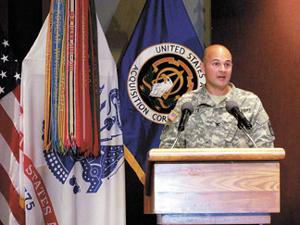The
US Army has begun to install a ground-based sense and avoid radar at
five installations to keep UAVs from crashing into other flying
objects. The radar, built by SRC, is planned for five sites to allow the
General Atomics-built MQ-1C Gray Eagle fly safely in domestic airspace,
said Col. Courtney Cote, project manager for Unmanned Aircraft Systems,
speaking at an industry conference last week.
The sites are Fort Drum, New York; Hunter Army Airfield, Georgia; Fort Campbell, Kentucky; Fort Hood, Texas; and Fort Riley, Kansas. Fort Hood is set to receive the first system in early 2015.
- See more at: http://www.uasvision.com/2014/11/13/us-army-installs-ground-based-sense-and-avoid-radar/?utm_source=feedburner&utm_medium=feed&utm_campaign=Feed%3A+UasVision+%28UAS+VISION%29#sthash.BcHCCpiU.dpuf
The sites are Fort Drum, New York; Hunter Army Airfield, Georgia; Fort Campbell, Kentucky; Fort Hood, Texas; and Fort Riley, Kansas. Fort Hood is set to receive the first system in early 2015.
- See more at: http://www.uasvision.com/2014/11/13/us-army-installs-ground-based-sense-and-avoid-radar/?utm_source=feedburner&utm_medium=feed&utm_campaign=Feed%3A+UasVision+%28UAS+VISION%29#sthash.BcHCCpiU.dpuf
 |
| GA-ASI Army Grey Eagle MQ-1C UAV |
Col. Courtney Cote The US Army has begun to install a ground-based sense and avoid radar at five installations to keep UAVs from crashing into other flying objects. The radar, built by SRC, is planned for five sites to allow the General Atomics-built MQ-1C Gray Eagle fly safely in domestic airspace, said Col. Courtney Cote, project manager for Unmanned Aircraft Systems, speaking at an industry conference last week.The sites are
- Fort Drum, New York;
- Hunter Army Airfield, Georgia;
- Fort Campbell, Kentucky;
- Fort Hood, Texas; and
- Fort Riley, Kansas.
Army-SRC Team to Build UAV ‘Sense and Avoid’ RadarsFort Hood is set to receive the first system in early 2015.
SRCTec Receives Contract to Produce Radars for Ground-Based Sense and Avoid | February 28, 2014| SRC, Inc.
 |
| 60-GBSAA.pdf |
SRC’s approach to GBSAA is an integrated, flexible and scalable solution based on the LSTAR® system, a lightweight surveillance and target acquisition radar with a low lifecycle cost. The radars are remotely operated and send their detection and track information to a central fusion processor. This data is then correlated with existing information to provide a complete and robust surveillance network sufficient to meet the rigorous requirements of the FAA.
LSTAR® System Specifications
- Azimuth coverage : 360°
- Elevation coverage : 0 - 30°
- Instrumented range: 50km
- System weight : < 227 kg / 500 lb
- System size
- Tripod mounted : 1.1m / 3.6 ft diameter by 2m / 6.5 ft height
- Pedestal mounted : 1.2m / 4 ft diameter by 2.7m / 9 ft height
- Temperature range : -32°C to 49°C
- Power requirements : 3,000 W, 110/240 VAC, 50-400 Hz
Report: Fort Drum Getting Specialized Radar for Drone Program | Military.com
FORT DRUM -- The post's Wheeler-Sack Army Airfield will be one of five places to receive a specialized radar system to prevent drones from hitting other flying objects.
The first site to receive the radar system from SRC will be Fort Hood, Texas, starting at the beginning of 2015. Other locations receiving the radar will be Hunter Army Airfield, Ga., Fort Campbell, Ky., and Fort Riley, Kan. No timetable was immediately available for when the system would come to the north country.
The radar system was first reported Thursday evening by Defense News, citing comments by Col. Courtney Cote, project manager for Unmanned Aircraft Systems, at an industry conference.

No comments:
Post a Comment